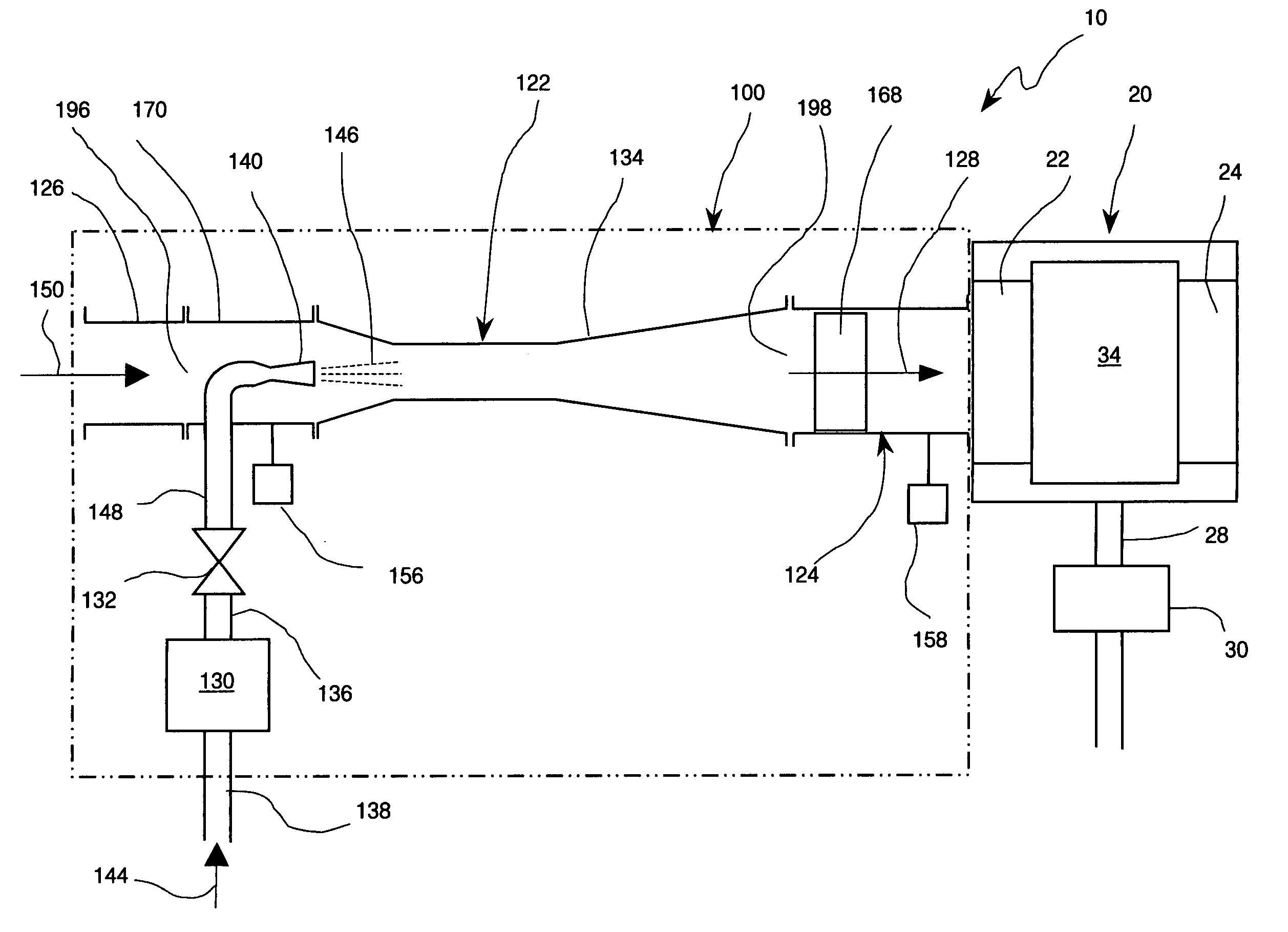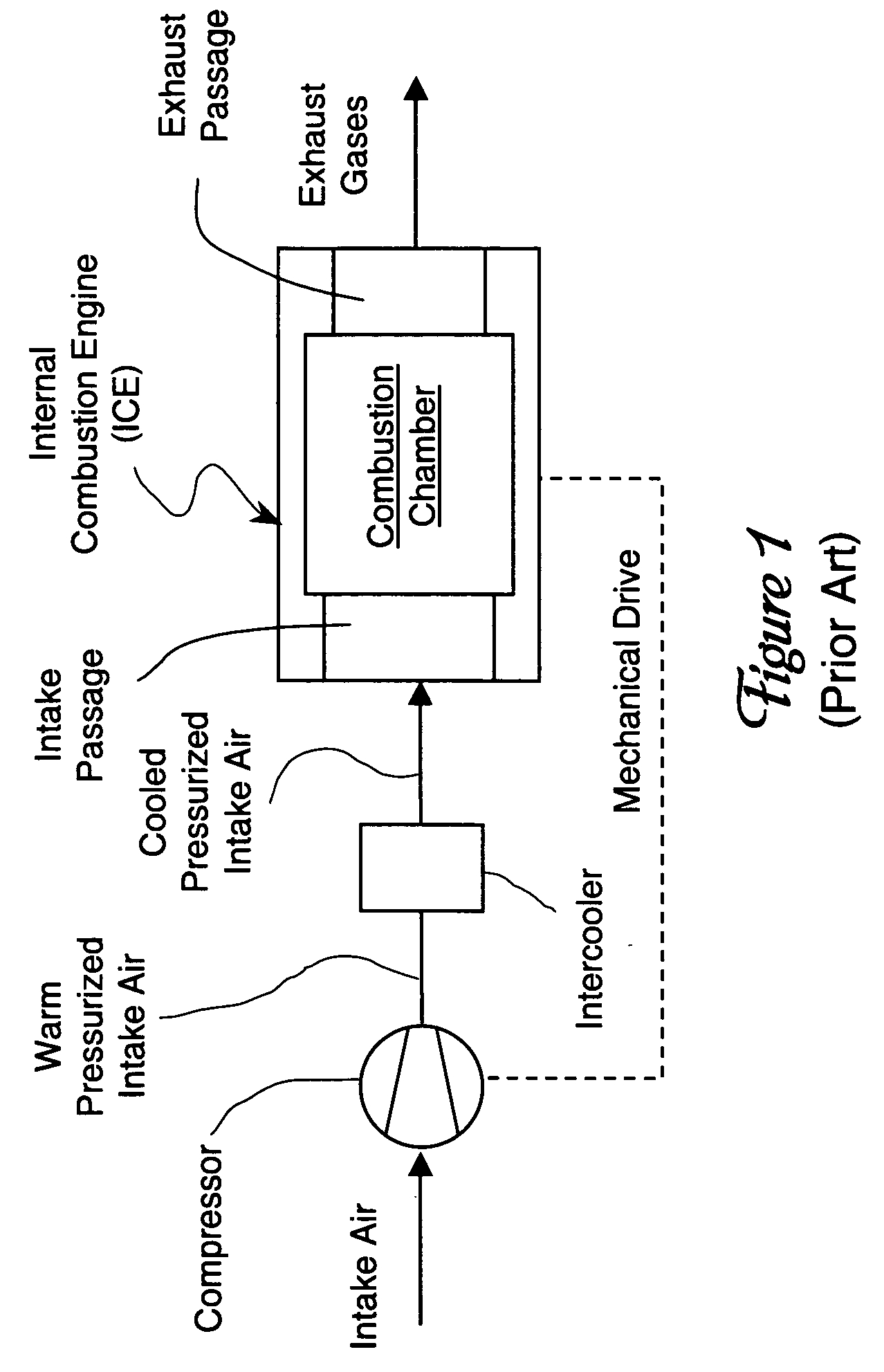Supercharged internal combustion engine
a supercharged, internal combustion engine technology, applied in combustion engines, non-positive displacement pumps, jet pumps, etc., can solve the problems of engine-driven superchargers with non-positive displacement compressors, small displacement ice often fails to provide satisfactory power, and only about one tenth of vehicle operating time, etc., to achieve good fuel economy, improve ice performance, and accelerate the effect of sufficien
- Summary
- Abstract
- Description
- Claims
- Application Information
AI Technical Summary
Benefits of technology
Problems solved by technology
Method used
Image
Examples
example 1
[0058] Consider a 4-cycle ICE with a 2 liter displacement. When operating at 1200 rpm the engine displaces 20 liters per second. Assume that under naturally aspirated conditions, the intake passage pressure is about 540 Torr (about 21.25 inches Hg), which translates to an intake air flow of about 14 standard liters per second. When equipped with the supercharger assembly 100, the ICE can be supercharged and the pressure in the intake passage 22 can be increased to 680 Torr (about 27 inches Hg) by flowing approximately 10 standard liters per second of air through the driving nozzle 140 of the ejector pump 122. This would theoretically boost the ICE output by about 25%, which for the exemplary 2-liter engine translates to about additional 34 horsepower. Assuming that the throat diameter of driving nozzle 140 is about 3.4 millimeter (0.132 inches), the required pressure p1 in line 148 is about 10 bar (145 psig).
[0059] As noted above, operation of the ejector pump 122 is controlled by ...
example 2
[0065] Using the ICE and supercharger parameters from Example 1 with high-pressure air flow of 10 standard liters per second, the ejector pump consumes 100 standard liters in a 10 second supercharging event. Assuming that supercharging is necessary (on the average) about 10% of the vehicle operating time, the compressor has (on the average) about 100 seconds to replenish the high-pressure air in the air tank. Thus, the average flow rate through the compressor is 1 standard liter per second (about 2.3 cubic feet per minute). A suitable piston type compressor delivering high-pressure air at this flow rate would weigh about 7 kilograms (15 lbs), have a volume of about 5 liters (324 cubic inches) and require about 1 horsepower to operate. As already noted, during a supercharging event the ICE system power output would increase by about 25%, which for the exemplary 2-liter engine translates to about additional 34 horsepower.
[0066] Referring now to FIG. 9, there is shown a supercharger a...
PUM
 Login to View More
Login to View More Abstract
Description
Claims
Application Information
 Login to View More
Login to View More - R&D
- Intellectual Property
- Life Sciences
- Materials
- Tech Scout
- Unparalleled Data Quality
- Higher Quality Content
- 60% Fewer Hallucinations
Browse by: Latest US Patents, China's latest patents, Technical Efficacy Thesaurus, Application Domain, Technology Topic, Popular Technical Reports.
© 2025 PatSnap. All rights reserved.Legal|Privacy policy|Modern Slavery Act Transparency Statement|Sitemap|About US| Contact US: help@patsnap.com



